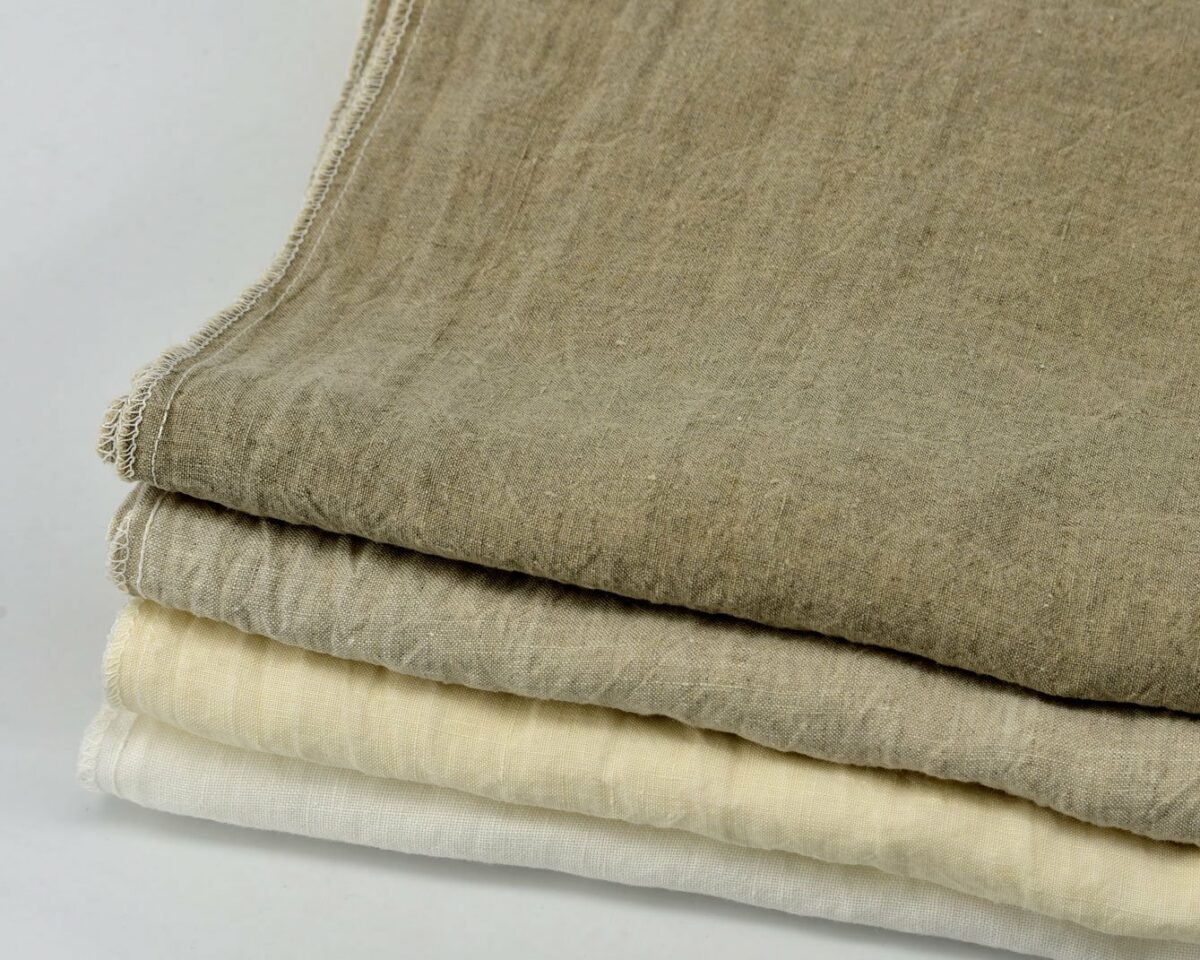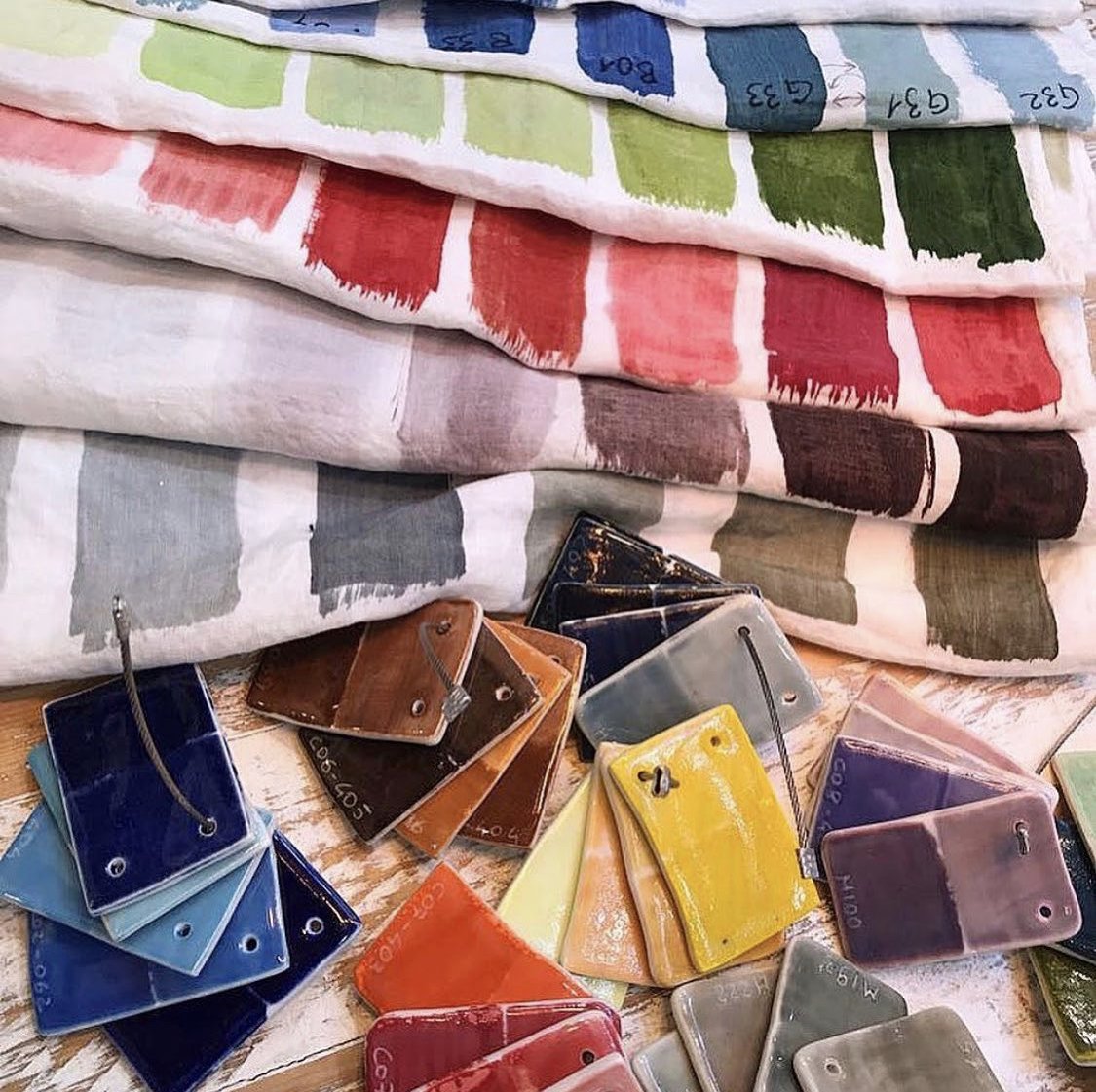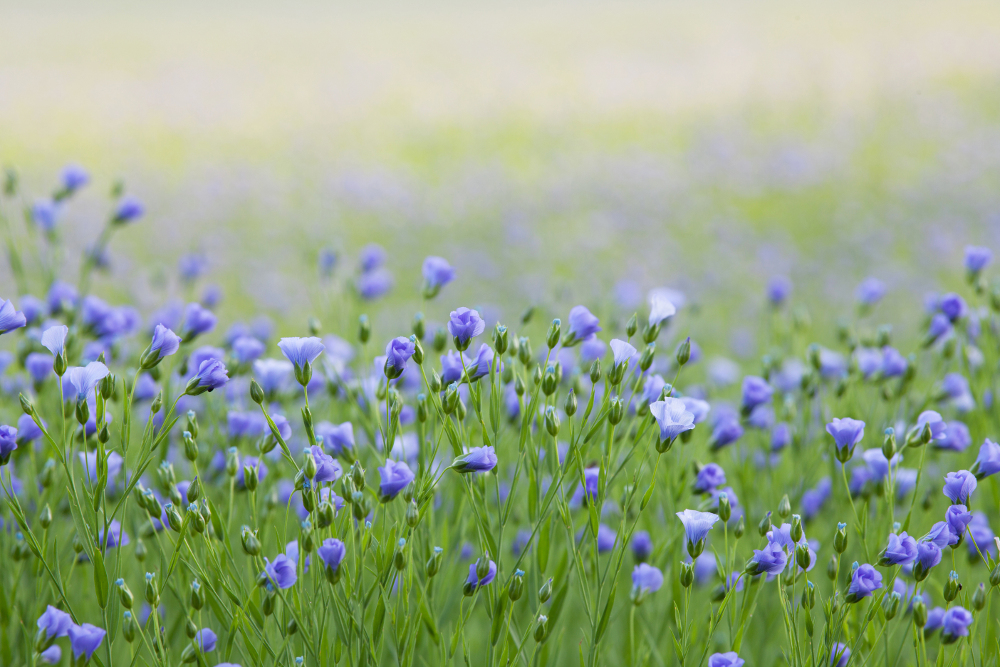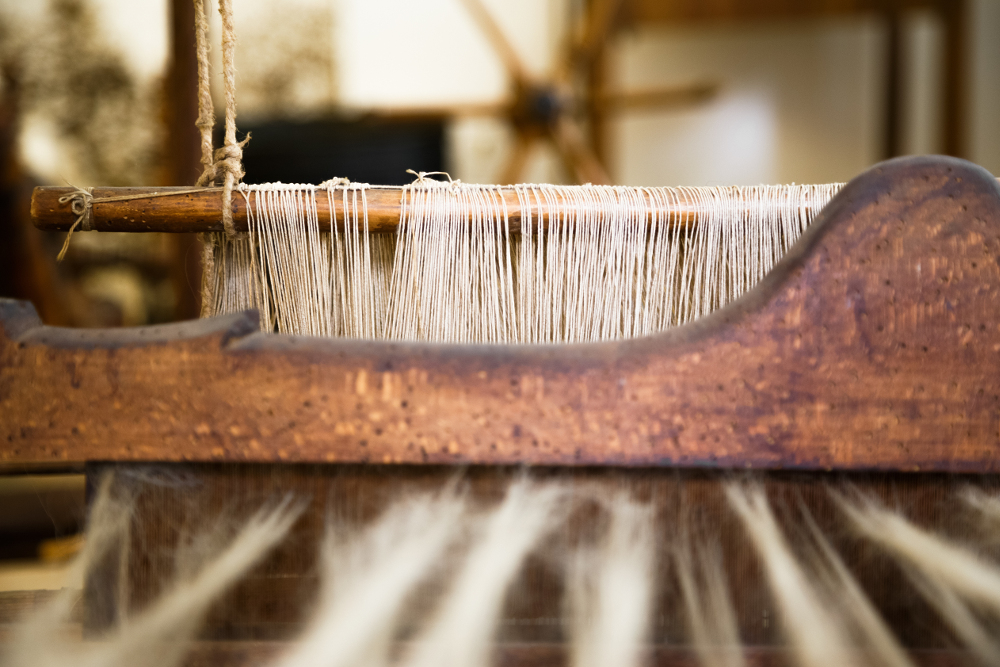News
How handcrafted linen is made
ALLÓRA’s artisans create beautiful linen products by hand, using techniques passed down through generations to make this soft fabric. Linen has been created for many decades as a strong fabric that can be used for many purposes, and is created using well-honed techniques.
What is linen made of?
Linen fabric is made using the fibres of the flax plant, Linum usitatissimum, which can be found in its wooden stalks. Flax has been cultivated by many different cultures across many different generations, being one of the oldest plants grown and tended to by humans.
Flax only flourishes once per annual growing season, and blooms with beautiful blue flowers. It is usually harvested before the plant is fully grown for the strongest flax fibres. Ideally, the length of the fibres that run along the plant stem and down the roots is preserved for when it is spun. The highest quality of linen is made when the plants are hand-harvested, which preserves the roots better than machine-harvesting, which tends to cut the roots off and allows the plant sap to weaken the fibres. Linen made from hand-harvested plants is much finer and more flexible than other linen types.
How is linen made?
Once harvested, flax fibres are air dried for several weeks before they are threshed. Threshing is the process where seeds are removed from the stalks. Then, the important fibres are harvested from the inner bark of the flax plants. Then, the plants undergo a process called retting, which separates the fibres so that they can be spun into linen or other products such as hemp. This process is best accomplished in natural water environments such as streams, rivers and ponds. The stalks are then dried out again, and stored until they are cured, which means that the brittle stalks break away, leaving the fibres free. The fibres are then combed out, with the longest fibres used for fine linen creation.
Next comes the spinning and weaving that makes linen the product we know today. The fibres are handspun with a distaff, a long pole attached to a spinning wheel, which keeps the fibres detangled and twists the fibres into yarns. This is then spun into a bobbin or a spool for storage. For the highest quality results, the yarns are pun extremely finely, before being boiled in soapy water. The yarn is then woven into sheets using a loom, which combines the threads together both horizontally and vertically. Handspinning and weaving the products is time consuming, but produces beautiful products that can then be dyed and patterned appropriately.
Our linen products are handmade to the highest standard, and are fabricated with the knowledge and skills that have been passed down through family members. To see our linen creations from our artisans at Stamperia Bertozzi and Tessitura Pardi, click here.







Your designs of the threading and the images are just beaufil thank y o u